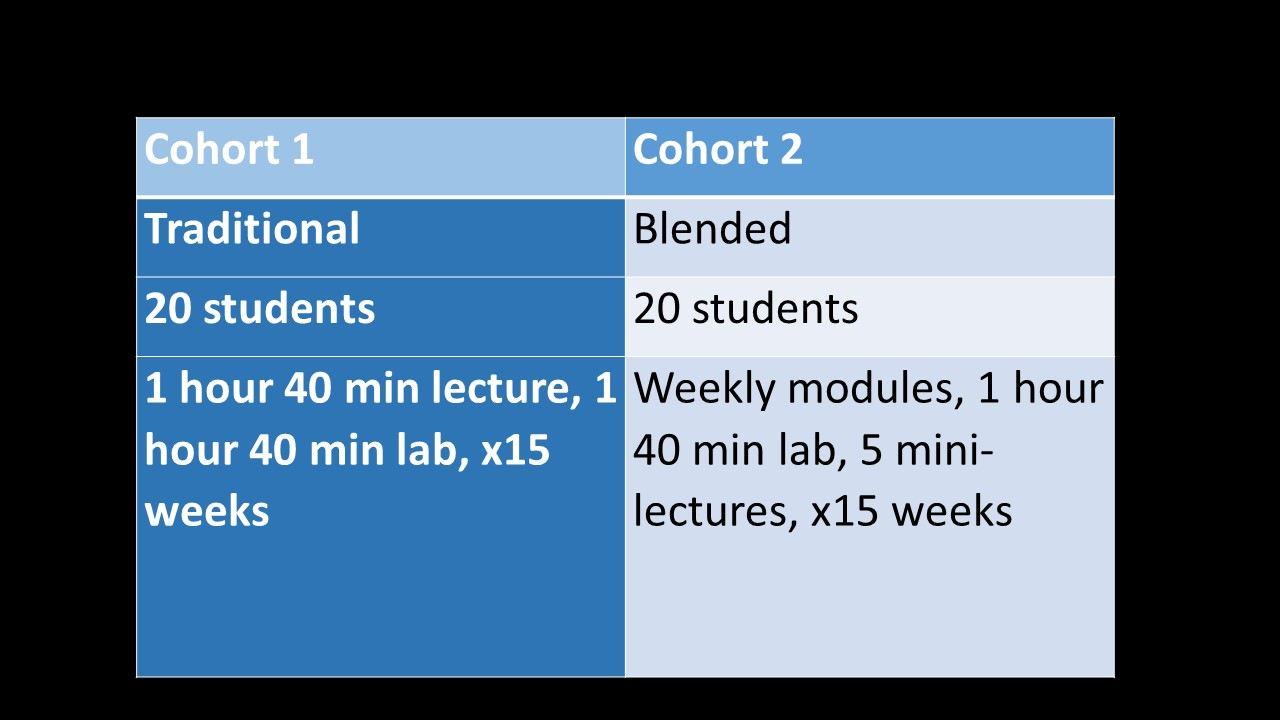
Dr. Tammy Divens, M.Ed., OTD, OTR/L
Occupational Therapy Assistant Professor
STUDENT QUOTE
"It gave me a chance to do some more studying and research for different online modules. It forced me to read into things and to study more than I probably would have."
Evidence of Success
Learning objectives, assignment and assessment descriptions, assessment examples, research outcomes, performance data, and student responses
LEARNING OBJECTIVE
Implement and apply concepts related to group dynamics and lead activity-focused groups within therapeutic contexts. Topics include but are not limited to: types of groups, group roles, leadership styles, group norms, and the selection of appropriate activities based on age and performance area or components, safety and management of the environment and time management.
ASSESSMENT DESCRIPTION
Each student will have an opportunity to act as a group leader and facilitate a group activity to their classmates. The leader may choose to facilitate one long activity, a series of short activities, or a combination of both. The activity/activities selected must be related to the age group and model of practice or frame of reference assigned.
The group session should take 25-30 minutes. The student is responsible for selecting an appropriate activity (activities) and obtaining all necessary supplies for the activity. The student must include Cole’s Seven Steps to “reflect a client-centered approach that facilitates client participation at every level of the process” (Cole, 2012, p. 1). A Cole’s 7 steps group preparation guide must be submitted to Canvas prior to your group facilitation.
LAB ASSESSMENT

Participants
Participants were 40 undergraduate students enrolled in an associate-level course in occupational therapy (20 students in the blended learning semester, 20 students in the traditional face-to-face comparison semester).
Face-to-face Delivery
Students allocated to the traditional face-to-face delivery group received the OT105W course delivered via a didactic-learning model where students attended lecture, completed case studies, and attended lab. In this version of the course, students attend a one hour 40 minute lecture and a one hour 40 min lab each week for 15 weeks. The lecture consists of a traditional instructor-student lecture setting with intermittent in-class activities. The lab consists of hands-on application activities to reinforce weekly lecture topics.
Blended-learning Delivery
Students allocated to the blended-learning model were required to complete weekly online modules, for 15 weeks, prior to attending lab. These modules included prerecorded lectures, text readings, online videos, articles, case studies, Quizlet activities, and low-stakes pre-lab understanding assessments. Students were required to attend a weekly one hour and 40 min lab. During lab, students engaged in hands-on application activities to reinforce weekly module topics. Following lab, students were required to participate in an online discussion board forum that required reflection. Students were also required to attend five face-to-face mini lectures scheduled throughout the semester.


Research Outcomes
Face-to-face vs. blended final exam grades are represented in these tables. Overall, final exam scores indicated exam performance was higher in the blended learning semester relative to the baseline semester. With the blended final exam grades, there were more students earning a grade of a B+ and there were zero failures, whereas, with the F2F final exam grades, there were more students earning a grade of a B- and there were three failures. Overall, face-to-face students scored an average of 78%, while blended students scored an average of 84% on their final exams.


Student Engagement
Following the completion of each course, students completed a 13-question anonymous survey on student engagement. The survey consisted of 12 questions where students rated learning experiences and perceptions of self-engagement using a 1-5 Likert scale. The survey also included one essay questions where students were asked to describe the pros and cons of the blended course. The tables represents student responses to the essay question.